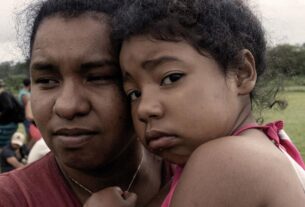As the world woke up to a global pandemic in early 2020, a new EU-funded research initiative was just getting underway – the Versatile Emerging Infectious Diseases Observatory (VEO). The researchers involved in this timely initiative had set out to improve how we respond to public health emergencies through better disease surveillance. Their efforts became all the more relevant and important in the face of the COVID-19 health crisis.
Five years on, lessons about the importance of pandemic preparedness still resonate strongly for principal investigator Professor Marion Koopmans, a Dutch virologist at the Erasmus Medical Centre in Rotterdam. Internationally recognised for her expertise in emerging infectious diseases and zoonoses, Koopmans is coordinating the VEO initiative.
“COVID instilled a sense of urgency about the risks of pandemics. It also showed that infrastructures were not ready for this fast movement and scaling up of disease spread,” she said.
Detecting disease hotspots
For decades, Koopmans has worked in public health, studying how diseases move between humans, animals and the environment, including outbreaks of flu, smallpox, Ebola, Zika and M-pox.
“
Our aim with VEO is to be at the right place at the right time, as early as possible and to nip problems in the bud before they become big outbreaks.
Through this work, she realised that existing surveillance systems were not built to keep pace with the rapid emergence of new infectious diseases.
“We run after one virus today, another tomorrow, and we need to get smarter,” she said.
With VEO, she has pioneered a more proactive, joined-up approach to surveillance, combining data on emerging diseases – whether spread by mosquitos, birds or through wastewater – with new threats linked to climate change.
Instead of focusing on just one issue or pathogen, VEO takes a holistic approach, scanning multiple potential hotspots for early warning signs.
“Our aim with VEO is to be at the right place at the right time, as early as possible, and to nip problems in the bud before they become big outbreaks,” she said.
Mosquito monitoring
Professor Frederic Bartumeus from the Blanes Centre for Advanced Studies in Spain leads Mosquito Alert, one element of VEO’s work on the rise of mosquito-borne diseases in Europe.
Diseases such as dengue or West Nile virus, once largely confined to tropical regions, are increasingly appearing in Europe.
Since 2010, there has been a steady rise in dengue, with over 400 local cases, mainly in Italy and France. West Nile virus is also spreading north. In 2024, it was reported in humans, birds and horses as far north as Germany and Poland, according to the European Centre for Disease Prevention and Control.
Bartumeus points to increased human movement, climate change and the expanding geographic range of different types of mosquitos as major drivers. Now, through VEO, his team was able to unearth new insights into how they spread.
For instance, Mosquito Alert is a citizen science app that allows the general public to send in photos of mosquitos, crowd-sourcing data across vast areas.
The app is available in 19 languages, and is used across Europe and beyond. Through VEO, it was used to train AI models to identify mosquito species from photos. It is helping local health teams anticipate risks and guide targeted control strategies.
But pooling this data with other sources is the bigger win.
“Preparedness is not only about pathogens and human disease, it’s about systems that anticipate and connect them. Projects like VEO are no longer optional – they are essential,” said Bartumeus.
Preparing for Disease X
At the Technical University of Denmark, VEO antimicrobial resistance expert Professor Frank Aarestrup heads up another part of VEO’s work: monitoring wastewater to track early signs of “silent epidemics”.
Traditional surveillance focuses on symptomatic patients. In contrast, sewage surveillance tracks changes across healthy populations. It can capture the presence of bacterial pathogens, viruses, parasites and antimicrobial-resistance genes all in one go.
“For completely novel pathogens, which we’re not yet looking for in clinical diagnostics, sewage-based surveillance might be a really good opportunity,” Aarestrup said.
Further north, in Greenland, VEO has also explored how rising Arctic temperatures might unlock hidden pathogens that have been trapped in permafrost for centuries.
The project involved expeditions onto the ice to analyse bacteria in soil found in archaeological “hotspots” – places where human waste was historically deposited.
“
Projects like VEO are no longer optional – they are essential.
Their results showed that traces of bacteria were still present, and future permafrost melt could reveal important clues for tracing new diseases.
Koopmans believes Greenland’s changing climate will also influence broader disease patterns, such as shifts in bird migrations.
“Parts of Greenland are places where migratory movements from Europe, Asia and the Americas meet. With climate change and melting ice, there’s potential to attract more birds for longer periods of time, opening a new highway for diseases to spread,” she said.
Set against all of this, VEO’s real goal is to facilitate the identification and rapid reaction to “Disease X” – a hypothetical yet unknown pathogen that could one day spark a future pandemic like COVID-19. In June 2025, the team is running a mock outbreak simulation to test their system.
Leaving a legacy
The end of this year will mark the official completion date of the VEO project, but Koopmans hopes its legacy will live on, helping to provide the stepping stones to assist future pandemic preparedness initiatives.
In the immediate term, much of the VEO data already generated will be open for reuse by others, and the team is busy creating a user-friendly app for anyone interested in the field.
The VEO team’s achievements will also be showcased at the EU’s “Nurturing Tomorrow” pavilion at World Expo 2025 in Osaka, Japan. For Koopmans, it is an opportunity to present VEO’s mission to a global audience and underline a vital message: smarter disease surveillance depends on robust systems and close international collaboration.
“VEO really shows how you can build a surveillance system that’s ready – no matter what pathogen emerges next, the tools are already in place,” she said. “It would be fantastic to continue this work through future partnerships.”
Research in this article was funded by the EU’s Horizon Programme. The views of the interviewees don’t necessarily reflect those of the European Commission. If you liked this article, please consider sharing it on social media.
Showcasing EU research at the World Expo
Osaka, Japan
13 April – 13 October
This summer, millions of people from around the world will head to Osaka, Japan, for Expo 2025. At this global gathering, countries and regions will share how they’re tackling some of today’s biggest challenges, from sustainability and digital connectivity to inclusivity and security.
The central theme of this year’s event is Designing Future Society for Our Lives. Visitors will get a chance to see how EU-funded research is helping shape that future. The EU’s Nurturing Tomorrow pavilion reflects Europe’s commitment to building a greener, more connected and inclusive world.
The EU pavilion is hosting exhibitions, talks and interactive experiences that spotlight cutting-edge EU research and innovation projects – all aimed at solving real-world problems and building international cooperation. Whether you’re curious about the future of clean energy, digital tech, or inclusive design, there’s something for everyone.
The work of the Versatile Emerging Infectious Diseases Observatory (VEO) will be presented during the Expo’s Health and Well-being Week from 20 June to 1 July.
Virtual visit
Can’t go to Osaka? Explore the Expo online at: https://www.expo2025.or.jp/en/future-index/virtual/virtual-site/



